Opel Unveils It’s New Astra 5-Door Hatchback With Gas & Diesel PHEV Powertrains:
Based On Stellantis' EMP2 Platform...
Now that the Opel brand is under the Stellantis umbrella, we are seeing some interesting new products from the Peugeot S.A. (PSA) side of the recently merged organization. It was only a month ago, that the German brand teased us with images of its sixth generation Astra hatchback. But today, Opel pulled the official covers off of it’s latest offering.
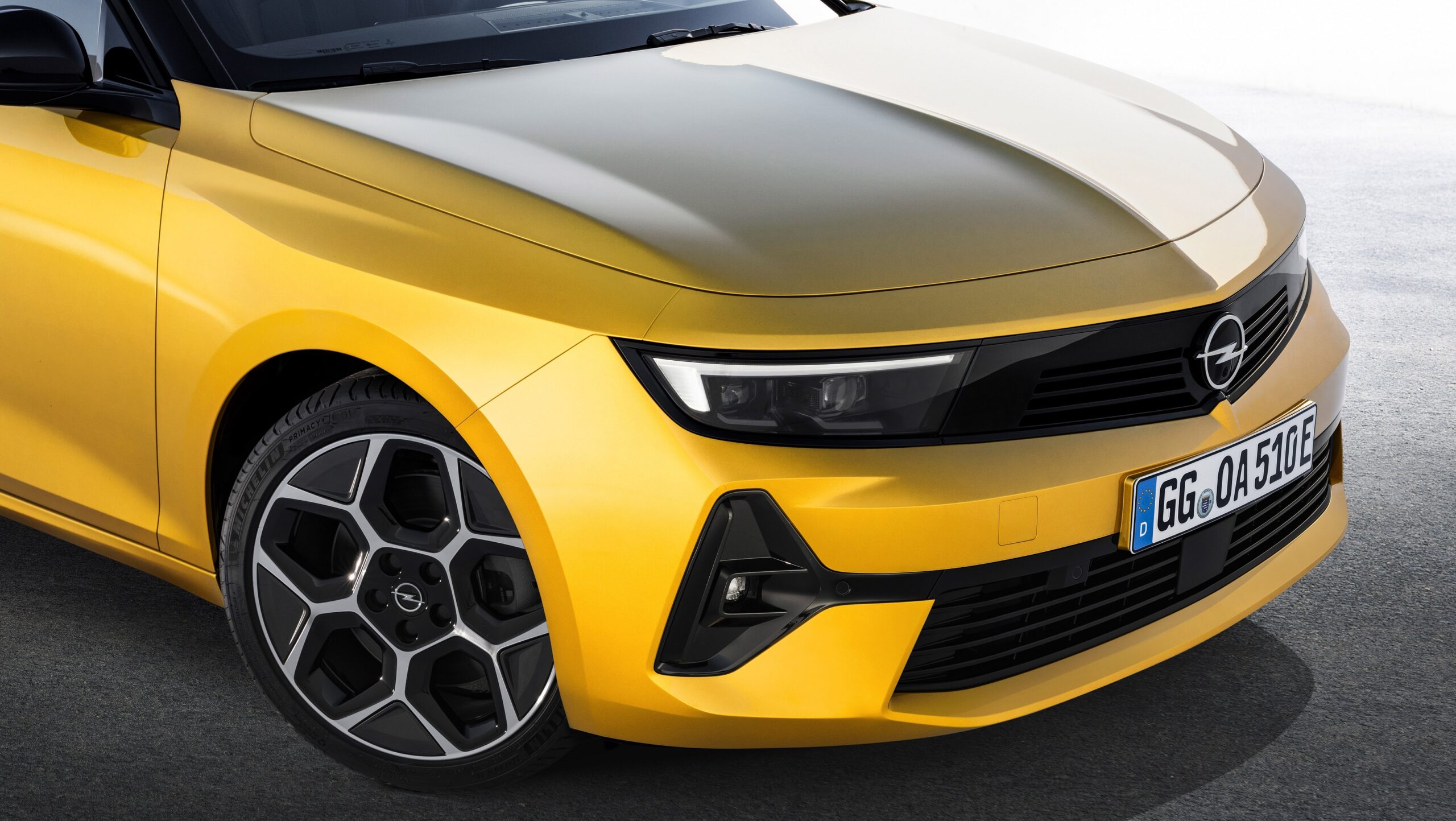
Mechanically similar to the Peugeot 308, thanks to the two sharing Stellantis’ EMP2 platform, both cars have an interesting take in their own way on the European hatchback market. The EMP2 platform allows for the torsional rigidity of the new Astra to be 14% higher than its predecessor. Steering and lateral stiffness of the chassis are improved thanks to a McPherson strut suspension at the front, torsion bar in the rear setup, which are designed for high yaw control (damping of the movement around the horizontal axis).
Of course, being an Opel, the EMP2 platform allows for optimized handling during high-speeds perfect for Opel’s own “Authobahnproof” test.

Opel will launch the Astra with a sporty 5-door hatchback (like the one shown here) first. The new hatchback offers more space than its predecessor. Opel targeted what they call the “sweet spot” of the segment, by making the new Astra 172.2 inches (4,374 mm) long and 73.2 inches (1,860 mm) wide. This means the Astra is slightly bigger than its 308 hatchback corporate cousin.
Thanks to the especially short front overhang, the new Astra is only .1 of an inch (4.0 mm) longer than the previous model, despite the considerably increased wheelbase of 105.3 inches (2,675 mm) or about .5 inches (13 mm). Thanks to an adjustable floor in the cargo area, the Astra can carry five passengers and 15 cubic-foot (422 liters) of luggage.
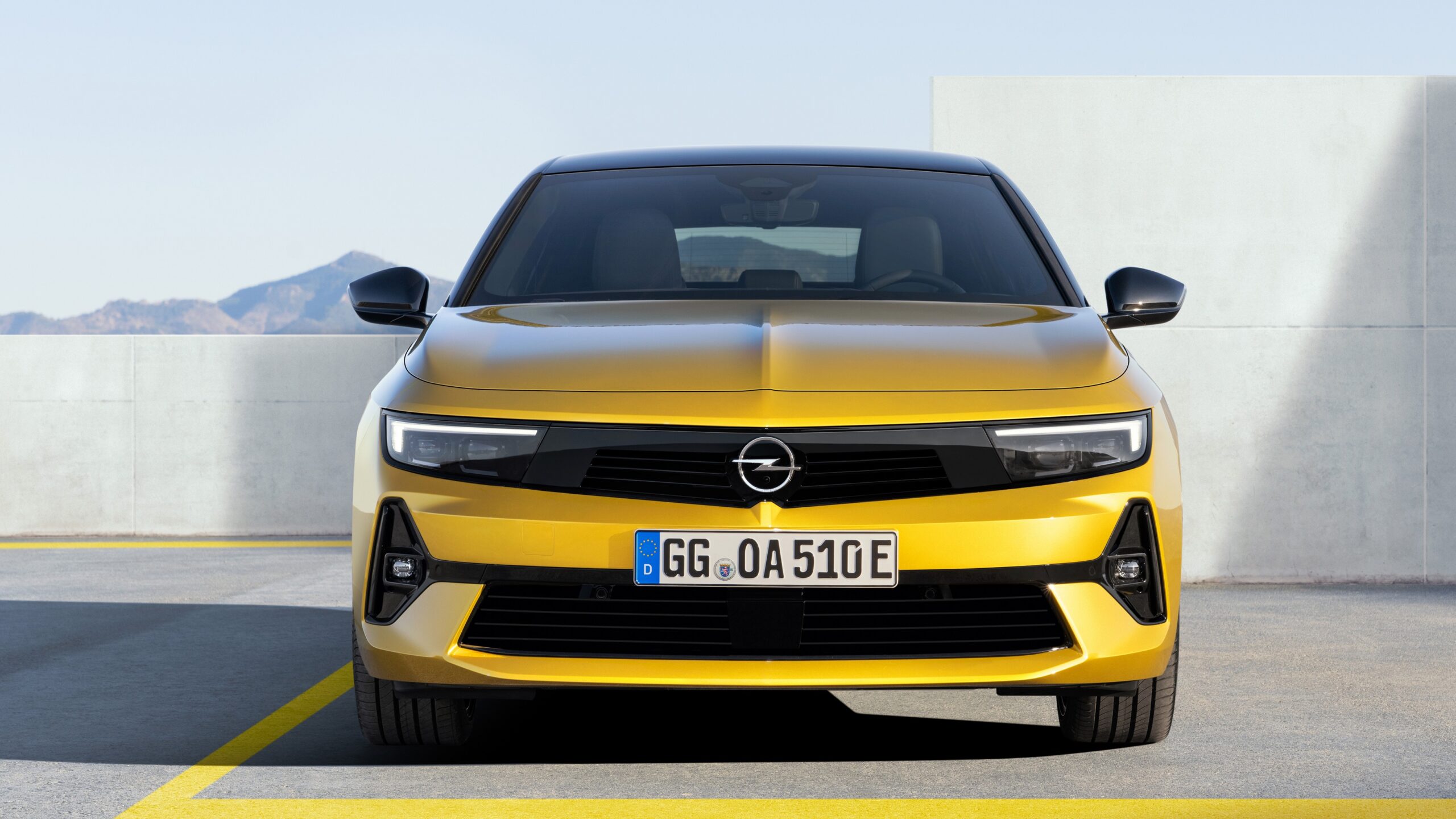
Using the new Opel design language, the new Astra looks even wider thanks to Opel’s new Vizor front-end styling. The Vizor also seamlessly integrates technologies such as the ultra-slim Intelli-Lux LED® headlamps and the front camera of the Intelli-Vision system. When looking from the side, the next-generation Astra looks especially dynamic thanks to the pronounced forward rake of the vehicle’s C-pillar.
At the rear, a centrally-mounted Blitz (the name of Opel’s logo), the vertically aligned high-mounted brake lamp, and the tail lamps are all made of energy-saving LEDs. The Blitz emblem also doubles as the latch for the tailgate, which is made of state-of-the-art composite material. This technology is not only light in weight and rigid, but it also allows the precise execution of design details such as especially slim tail lamps.
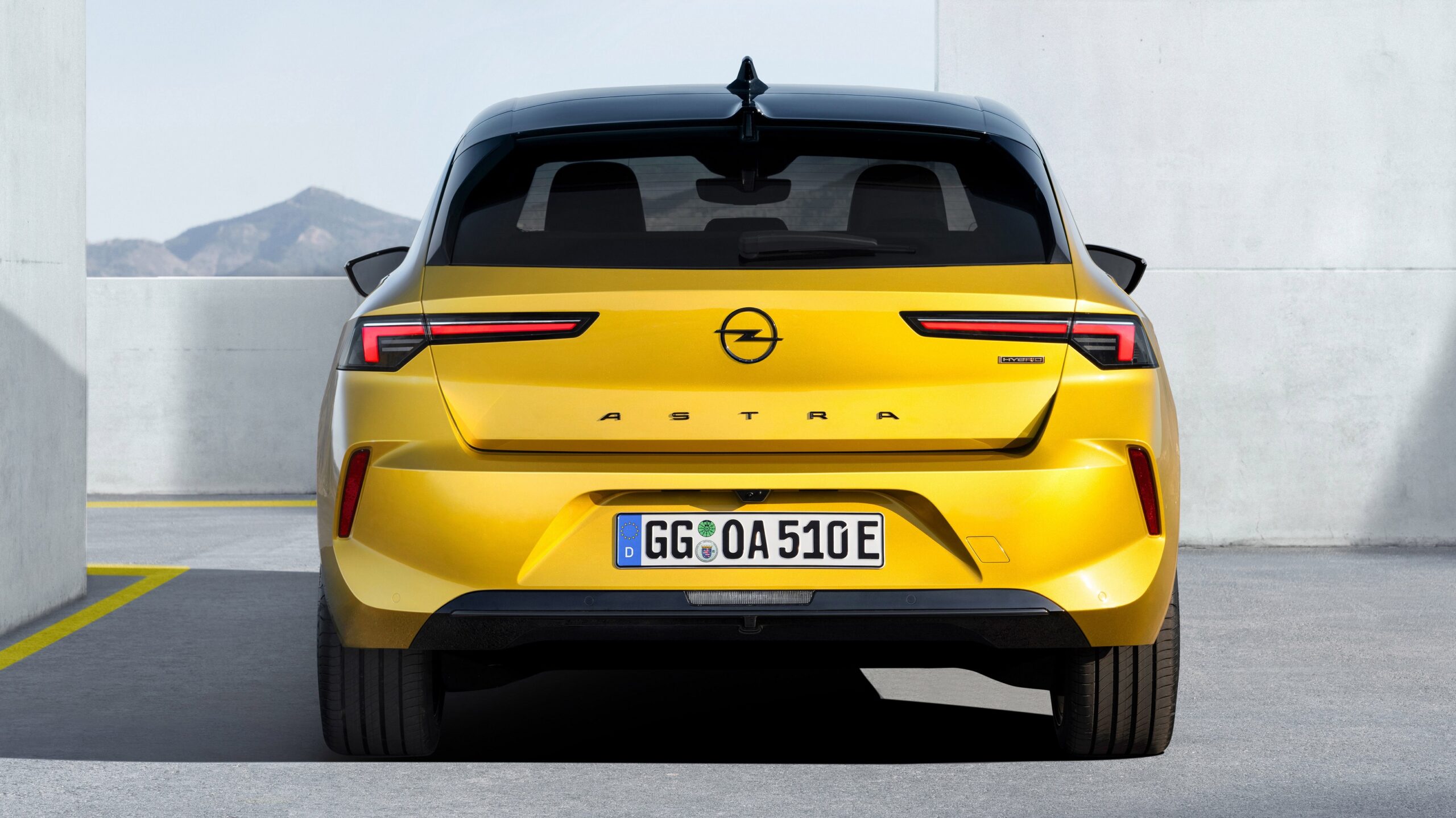
German precision applies throughout the interior as well, where the highlight is the next generation of the Pure Panel, first introduced in the Mokka. This expansive, digital cockpit features two 10-inch displays, seamlessly integrated together in a horizontal format. Thanks to a shutter-like layer that prevents upward reflections in the windscreen, the design dispenses with a hood over the displays, which further enhances the high-tech functionality of the interior.
With the physical controls reduced to the minimum in the form of finely crafted keys, the Pure Panel achieves the optimum balance between digitization and intuitive operation, without the need for sub-menus. There is no need for cables either since the new generation of multimedia infotainment systems with connected services – which can be operated by natural language voice control as well as by touch – can be connected as standard on all model variants to wireless Apple CarPlay and Android Auto via compatible smartphones.
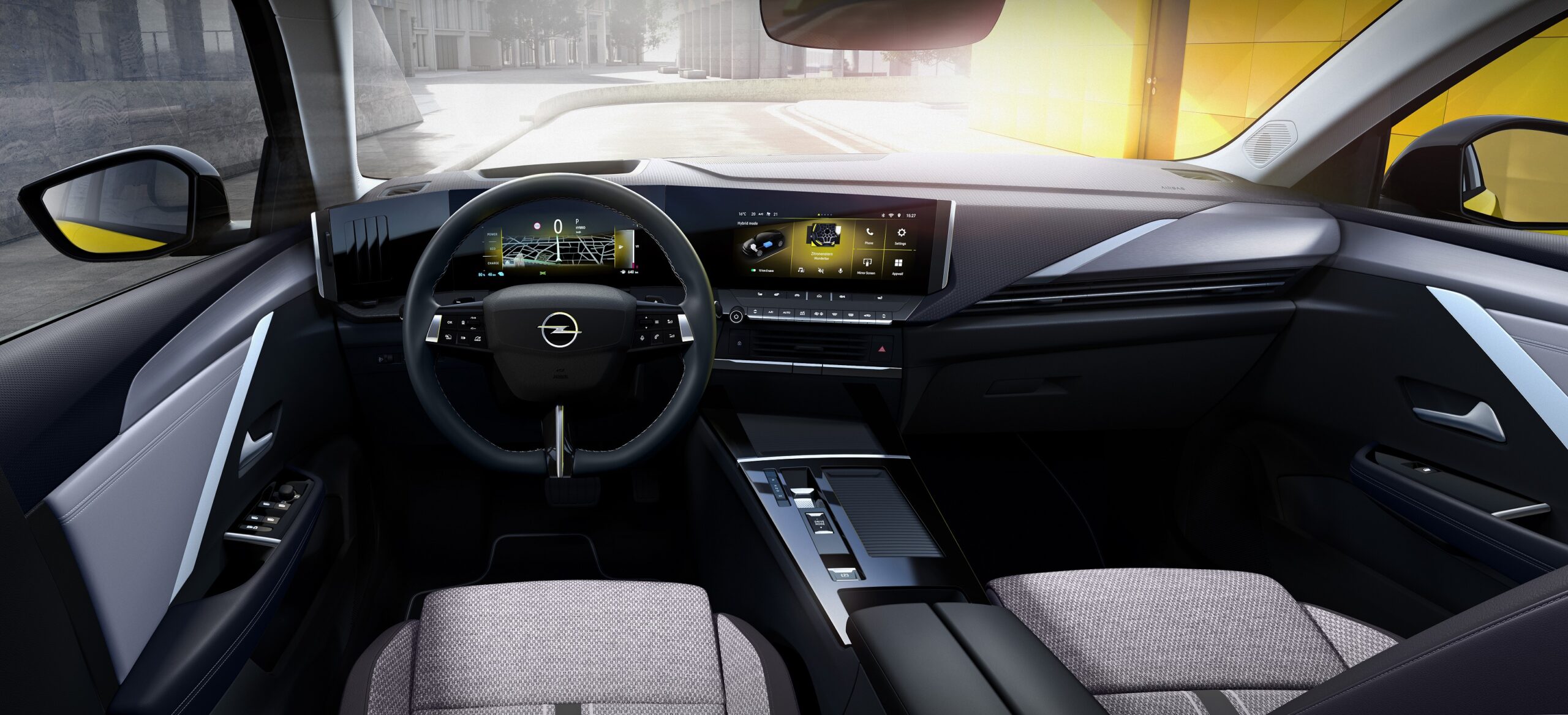
The new Astra architecture also incorporates the latest Automated Driver Assistance Systems (ADAS). In addition to the multifunction camera in the windscreen, the technology comprises four body cameras (one at the front, one at the rear, and one on each side), five radar sensors (one at the front and one at each corner), as well as ultrasonic sensors front and rear. Cameras and sensors are integrated with e-horizon connectivity in Intelli-Drive 2.0, which extends the range of the cameras and the radar. This enables the system to adapt the speed in curves, make speed recommendations, and perform semi-automatic lane changes. Hands-off detection on the steering wheel ensures the driver remains engaged at all times.
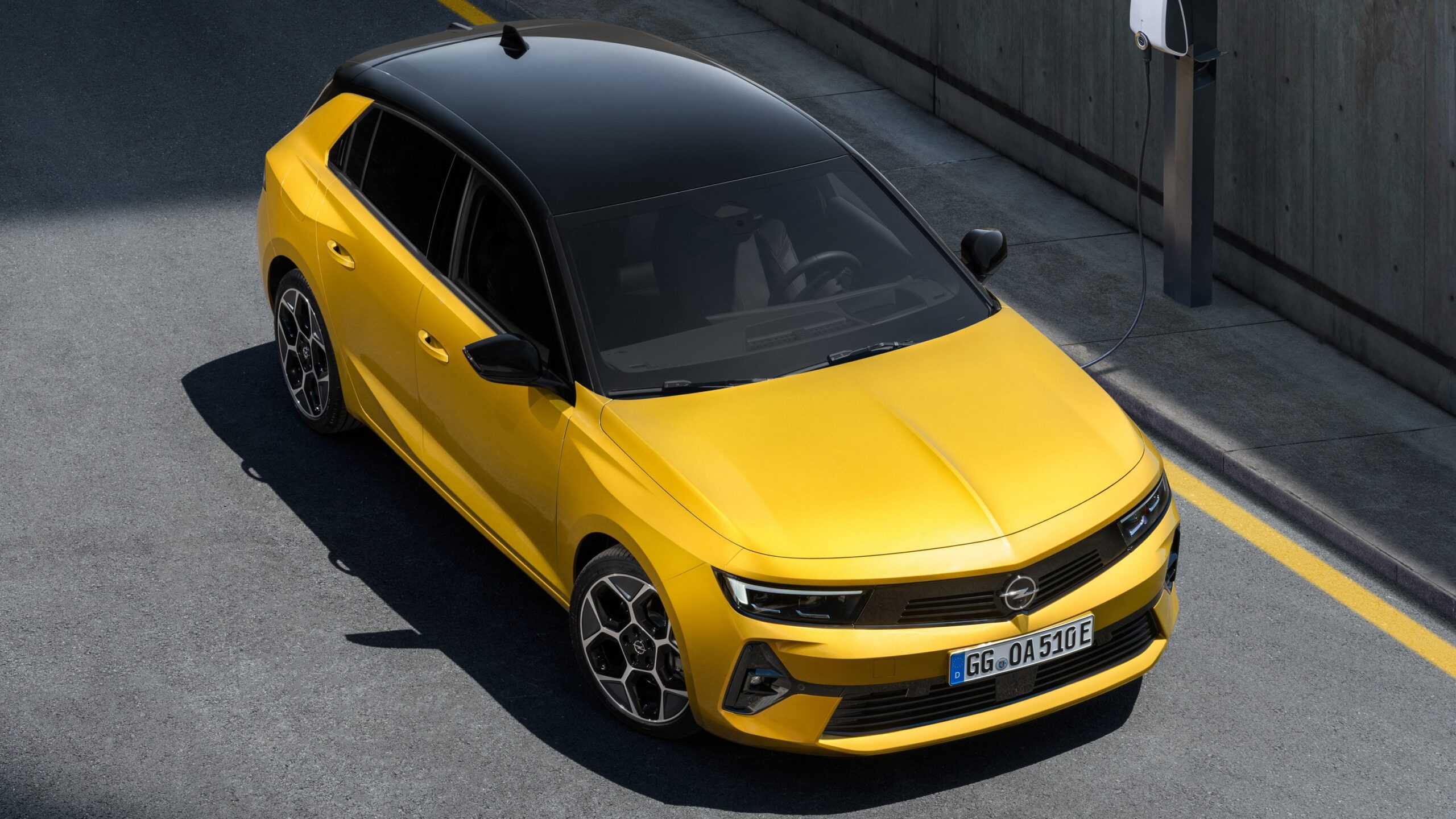
Rear cross-traffic alert, long-range blind-spot detection, and active lane positioning, which keeps the car in the middle of the driving lane, make up the Intelli-Drive 1.0 system. The long list of ADAS also includes adaptive cruise control and with the automatic transmission, driving resumes automatically thanks to “Stop & Go”. There is also a Heads-Up Display (HUD), and the camera and radar-based Intelli-Vision assist when parking.
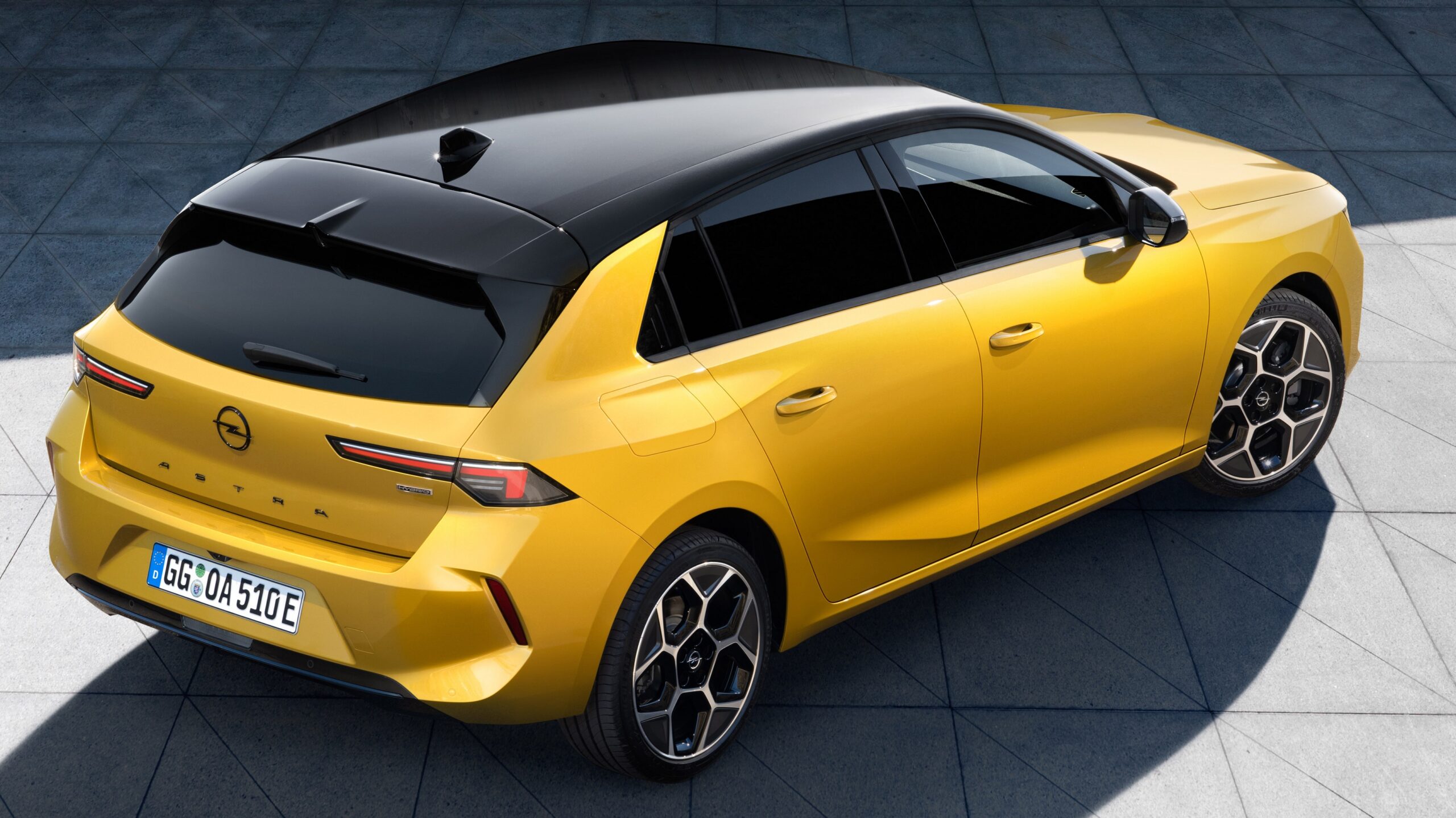
For the first time ever, the new Opel Astra will over two plug-in hybrid (PHEV) powertrains – one gasoline and one diesel. Power ranges from 81 kW (110 horsepower) to 96 kW (130 horsepower) with the gasoline and diesel variants and up to 165 kW (225 horsepower) system output with the plug-in hybrid variants. A 6-speed gearbox is standard on the gasoline and diesel power units, while an 8-speed automatic transmission (electrified on the plug-in hybrids) is optional.
Ordering for the new Astra will open in the fall. Customers will begin taking delivery of the new 2022 Opel Astra, early next year.
2022 Opel Astra 5-Door Hatchback Image Gallery:

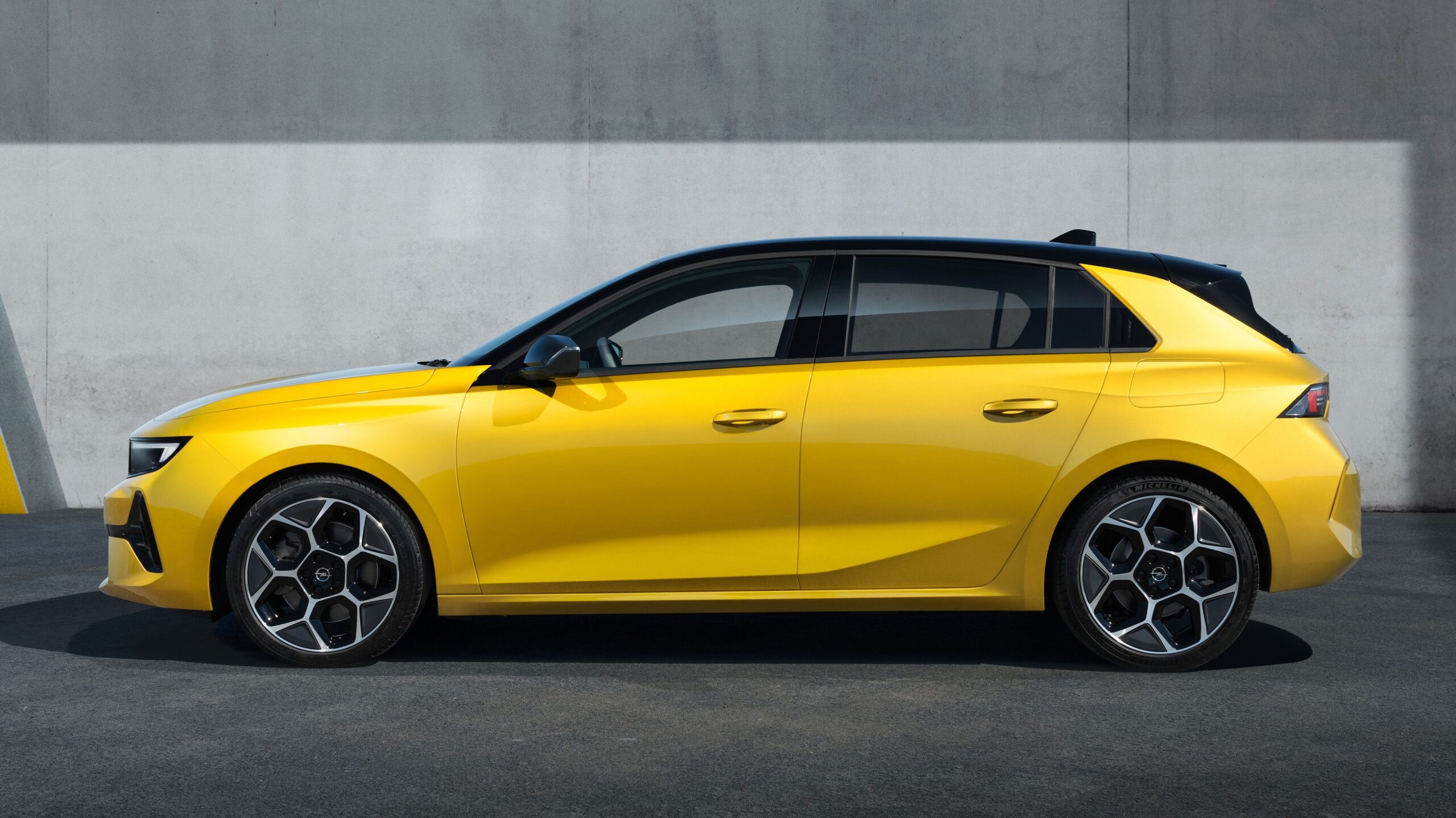
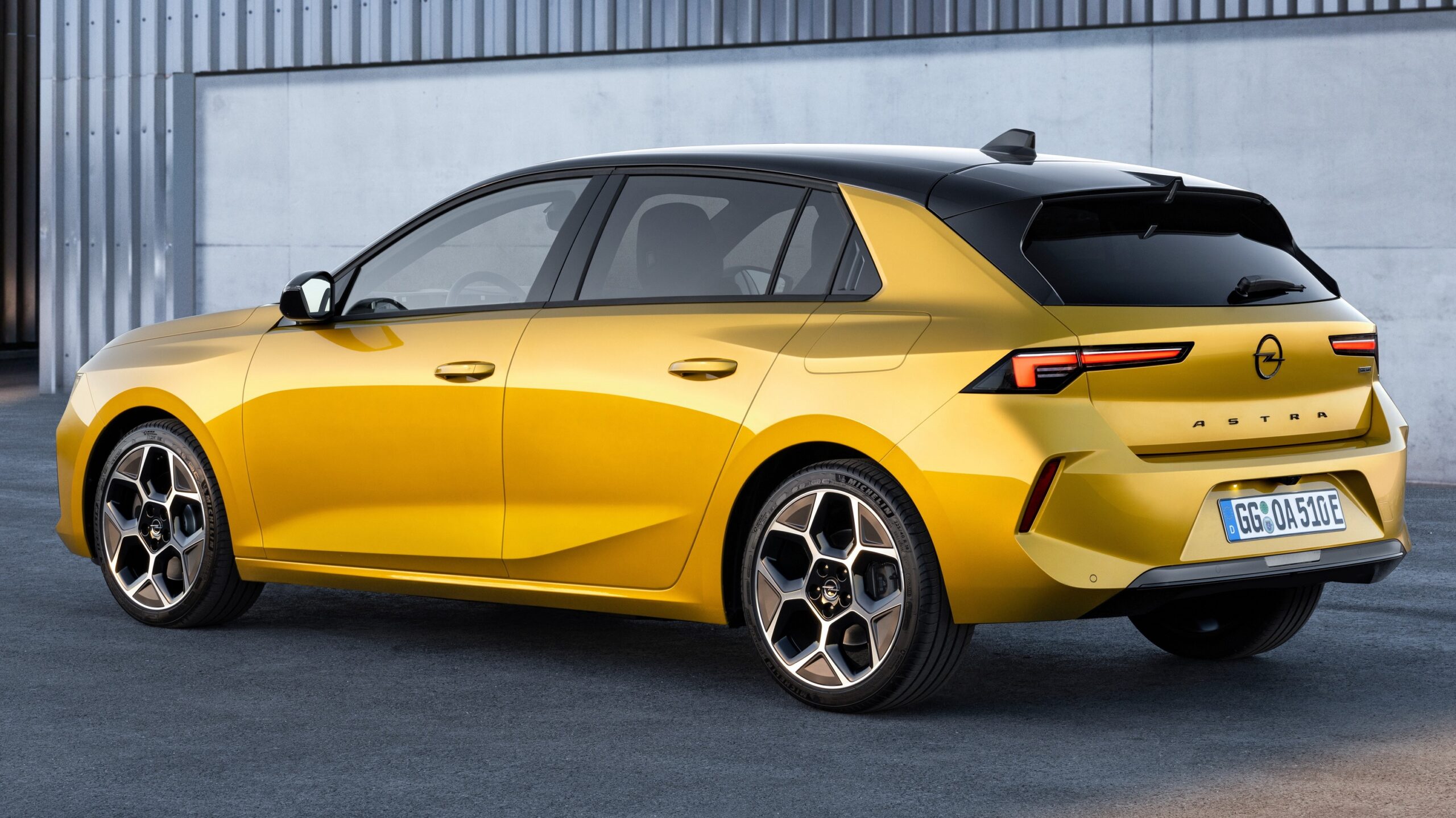
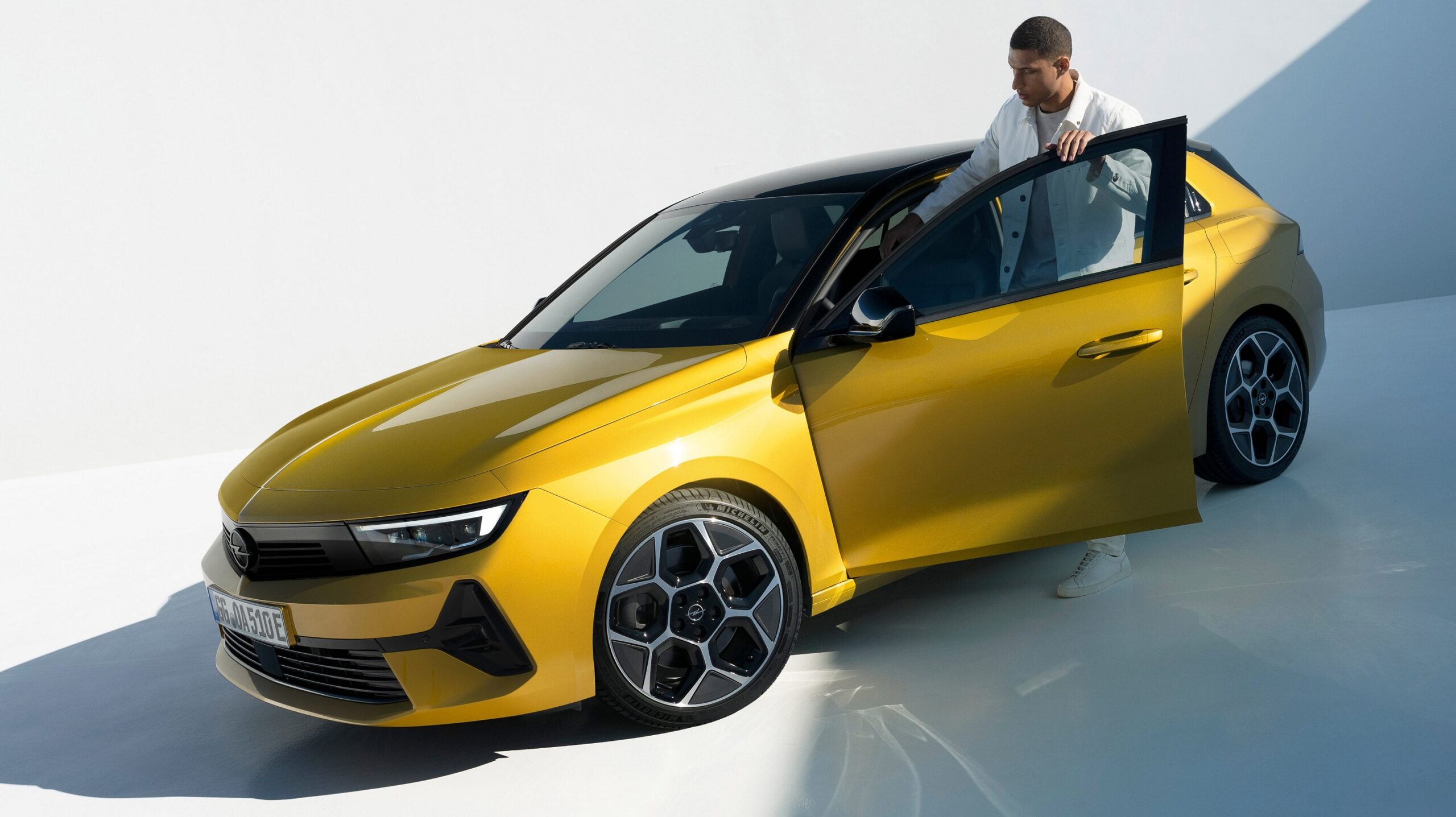





26 replies
Loading new replies...
Join the full discussion at the Mopar Insiders Forum →